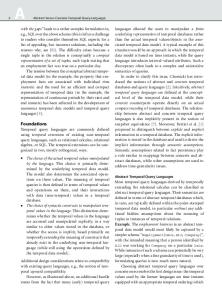The Axial Anomaly
Sometimes a symmetry which seems to be present in a theory at the classical level can be spoiled by quantum (loop) effects. We have already seen such an example without knowing it.
- PDF / 3,624,969 Bytes
- 158 Pages / 439.37 x 666.142 pts Page_size
- 45 Downloads / 332 Views
James M. Cline
Advanced Concepts in Quantum Field Theory With Exercises 123
SpringerBriefs in Physics Series Editors Balasubramanian Ananthanarayan, Centre for High Energy Physics, Indian Institute of Science, Bangalore, India Egor Babaev, Physics Department, University of Massachusetts Amherst, Amherst, MA, USA Malcolm Bremer, H H Wills Physics Laboratory, University of Bristol, Bristol, UK Xavier Calmet, Department of Physics and Astronomy, University of Sussex, Brighton, UK Francesca Di Lodovico, Department of Physics, Queen Mary University of London, London, UK Pablo D. Esquinazi, Institute for Experimental Physics II, University of Leipzig, Leipzig, Germany Maarten Hoogerland, University of Auckland, Auckland, New Zealand Eric Le Ru, School of Chemical and Physical Sciences, Victoria University of Wellington, Kelburn, Wellington, New Zealand Dario Narducci, University of Milano-Bicocca, Milan, Italy James Overduin, Towson University, Towson, MD, USA Vesselin Petkov, Montreal, QC, Canada Stefan Theisen, Max-Planck-Institut für Gravitationsphysik, Golm, Germany Charles H.-T. Wang, Department of Physics, The University of Aberdeen, Aberdeen, UK James D. Wells, Physics Department, University of Michigan, Ann Arbor, MI, USA Andrew Whitaker, Department of Physics and Astronomy, Queen's University Belfast, Belfast, UK
SpringerBriefs in Physics are a series of slim high-quality publications encompassing the entire spectrum of physics. Manuscripts for SpringerBriefs in Physics will be evaluated by Springer and by members of the Editorial Board. Proposals and other communication should be sent to your Publishing Editors at Springer. Featuring compact volumes of 50 to 125 pages (approximately 20,000–45,000 words), Briefs are shorter than a conventional book but longer than a journal article. Thus, Briefs serve as timely, concise tools for students, researchers, and professionals. Typical texts for publication might include: • A snapshot review of the current state of a hot or emerging field • A concise introduction to core concepts that students must understand in order to make independent contributions • An extended research report giving more details and discussion than is possible in a conventional journal article • A manual describing underlying principles and best practices for an experimental technique • An essay exploring new ideas within physics, related philosophical issues, or broader topics such as science and society Briefs allow authors to present their ideas and readers to absorb them with minimal time investment. Briefs will be published as part of Springer’s eBook collection, with millions of users worldwide. In addition, they will be available, just like other books, for individual print and electronic purchase. Briefs are characterized by fast, global electronic dissemination, straightforward publishing agreements, easy-to-use manuscript preparation and formatting guidelines, and expedited production schedules. We aim for publication 8–12 weeks after acceptance.
More information about this series a
Data Loading...











